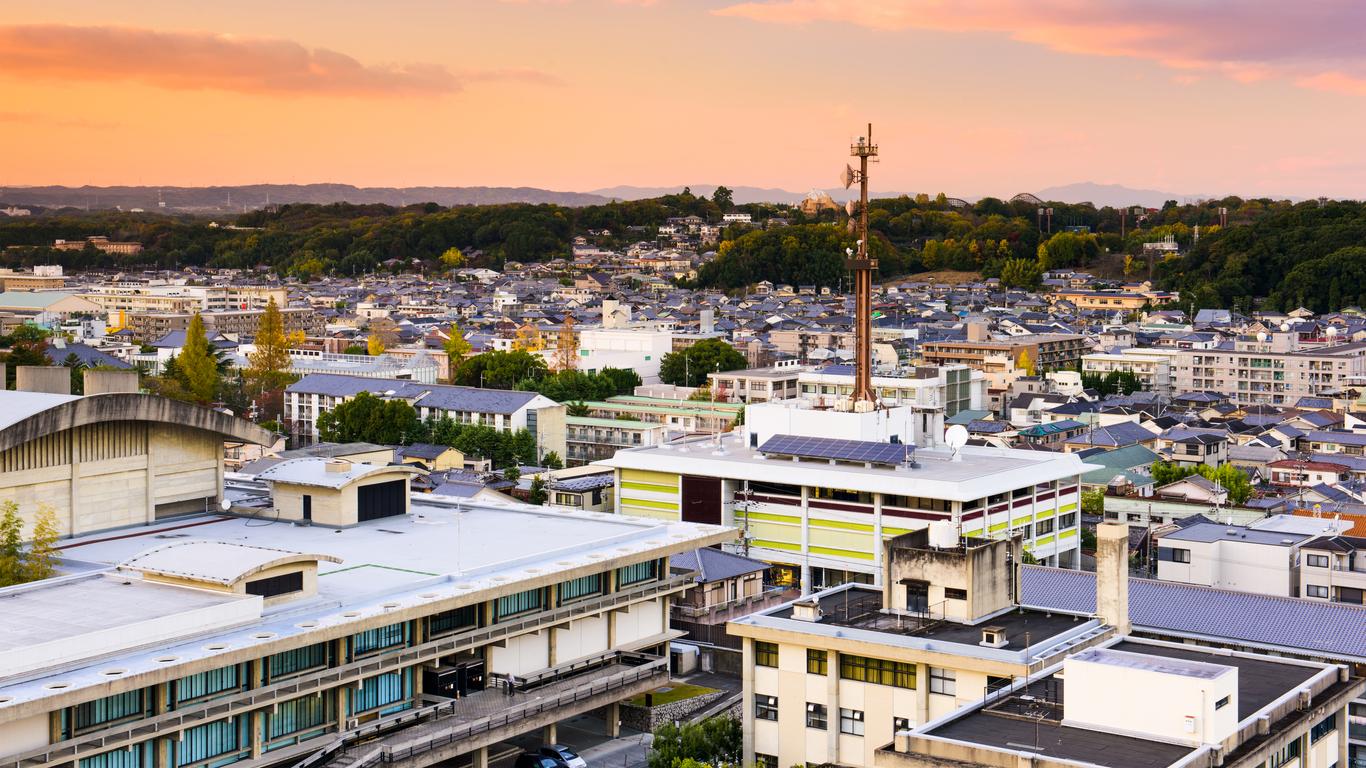Nara is an ancient city where you can discover centuries of culture, art and architecture. As the former capital, the city boasts some of the oldest and most beautiful temples in Japan, including some with UNESCO status. View Japanese treasures at world-class museums and get lost in a historic district filled with beautifully preserved wooden houses.
Things to do in Nara
Gaze up at one of the largest bronze statues in the world at Tōdai-ji, a magnificent Buddhist temple and UNESCO World Heritage Site. Within the temple is the 16-metre-tall Great Buddha statue made with more than 400 tonnes of bronze and 100 kilograms of gold. Locals call it Daibutsu and have been visiting the statue since the 8th century. The temple is set in a beautiful park home to a herd of deer. Stroll to the east side of the park to visit Kasuga Taisha, a Shinto shrine decorated with thousands of lanterns.
Hōryū-ji was founded in the 7th century by a Japanese prince and is one of the oldest temples in Japan. The temple moonlights as a home for early Buddhist treasures, including ancient bronze statues and wooden sculptures wrapped in shimmering gold leaf.
Admire some of the finest examples of Buddhist art in the country at the Nara National Museum. You’ll be dazzled by treasures from across the Nara Prefecture and Honshu Island, including statues and bronzes. The Silk Road exhibit is a highlight and charts the history of the famous trade route.
Wander through Naramachi, a historic merchant district dotted with beautifully preserved wooden townhouses. They’re called “machiyas” and feature lattice facades to filter natural light. Some have been reimagined as museums that offer a glimpse of life in the Edo Period. Step inside to admire the beamed ceilings and pretty courtyard gardens.
Getting around Nara
Parts of Nara are pedestrian-friendly and easy to get around on foot. Major sights and attractions like Tōdai-ji are easy to access by train. The city is in south-central Honshu, less than one hour from Kyoto or Osaka by car or train. Osaka International Airport is a 40-minute drive away.





